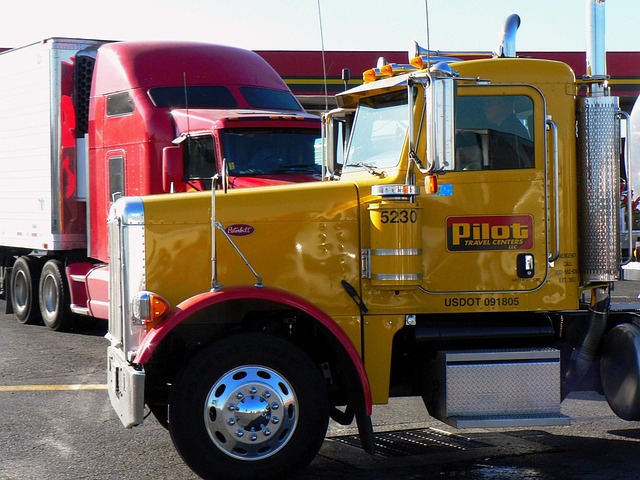Trucks, vital for industries like construction and transportation, present safety and maintenance challenges due to their size and power. Regular, proactive maintenance is essential to prevent costly breakdowns. Versatile medium and light-duty pickups require adherence to manufacturer service schedules, fluid level monitoring, tire inspection, and focus on critical components. The trucking industry is evolving with advancements in electric and hybrid powertrains to meet environmental standards. The future trends include autonomous trucks, driven by stringent emission regulations, which will shape a cleaner, safer transportation sector in global logistics.
In today’s diverse transportation landscape, understanding the unique challenges faced by various vehicle types is paramount. This article explores the multifaceted issues affecting heavy-duty trucks, medium and light-duty pickups, and commercial vehicles. We delve into safety and maintenance for trucks, common practices for pickups, regulatory compliance and environmental concerns for commercial vehicles, and the transformative impact of electric and autonomous technologies on the future of transportation.
- Heavy-Duty Trucks: Safety and Maintenance Considerations
- Medium and Light-Duty Pickups: Common Issues and Reliable Practices
- Commercial Vehicles: Regulatory Compliance and Environmental Impact
- Future of Transportation: Electric and Autonomous Vehicles Affected by Regulations
Heavy-Duty Trucks: Safety and Maintenance Considerations

Heavy-duty trucks, often the workhorses of industries such as construction and transportation, are a unique category within the automotive spectrum. Their size and power make them essential for tackling demanding tasks but also present specific safety and maintenance challenges. One key consideration is their weight and handling; due to their bulk, heavy-duty trucks require more space to maneuver and often have longer braking distances, necessitating heightened driver awareness and rigorous training.
Regular, proactive maintenance is critical for these vehicles. Due to the constant strain placed on their components, trucks demand meticulous care. This includes timely inspections, especially of crucial systems like brakes, tires, and engines, to ensure they operate safely and efficiently. Moreover, regular fluid checks and replacements are vital to maintain optimal performance and prevent breakdowns, which can be particularly costly and time-consuming for commercial fleets.
Medium and Light-Duty Pickups: Common Issues and Reliable Practices

Medium and light-duty pickups are a staple in many households and businesses, offering versatility and power for various tasks. However, like any vehicle, they’re not immune to common issues. Regular maintenance is key to keeping them running smoothly. Practices such as adhering to manufacturer-recommended service schedules, keeping an eye on fluid levels (especially engine oil, coolant, and brake fluid), and inspecting tires for proper inflation and wear can prevent major problems.
Additionally, focusing on crucial components like the brakes, suspension, and exhaust system is essential. Regularly checking for leaks, corrosion, or damage in these areas can help avoid unexpected breakdowns. Many reliable practices also involve using high-quality parts when replacing worn-out items and staying informed about potential recalls or known issues specific to certain models.
Commercial Vehicles: Regulatory Compliance and Environmental Impact

Commercial vehicles, including trucks, play a vital role in global trade and transportation, but they also face stringent regulatory compliance standards due to their environmental impact. As the world shifts towards sustainability, regulations are increasingly focusing on reducing greenhouse gas emissions from heavy-duty vehicles. This has led to advancements in truck technology, such as the adoption of electric and hybrid powertrains, which offer promising solutions for a greener future.
These regulations require manufacturers to invest in research and development to create more efficient engines and implement stricter emission control systems. The goal is to minimise the environmental footprint of trucks while maintaining their reliability and performance. With the right strategies, commercial vehicles, especially trucks, can contribute to a more sustainable transportation sector, ensuring both regulatory adherence and a positive environmental impact.
Future of Transportation: Electric and Autonomous Vehicles Affected by Regulations

The future of transportation is here, with electric and autonomous vehicles (AVs) rapidly gaining traction. However, their widespread adoption is not without challenges—regulations play a pivotal role in shaping this evolving landscape. As governments around the world navigate the complex web of safety, environmental, and ethical considerations, the path towards fully autonomous and all-electric fleets becomes both promising and fraught with regulatory hurdles.
Trucks, a cornerstone of global logistics, are no exception. Stringent emission standards drive the transition to electric trucks, aiming to reduce carbon footprints while ensuring road safety. Simultaneously, regulations governing autonomous trucking seek to establish guidelines for testing, deployment, and accountability, addressing concerns about driverless operations’ potential risks and ethical dilemmas. The interplay between these factors will ultimately determine the pace at which electric and autonomous trucks transform our roads, shaping a future where vehicles navigate smarter, cleaner, and safer.
In conclusion, various vehicle types, from heavy-duty trucks to electric autonomous vehicles, face distinct challenges and opportunities in today’s evolving transportation landscape. Understanding the safety, maintenance, regulatory, and environmental factors affecting each category is crucial for ensuring efficient and sustainable mobility. By adopting best practices and embracing innovations like electrification and autonomy, the trucking industry can navigate the future with enhanced safety, reduced environmental impact, and regulatory compliance.
